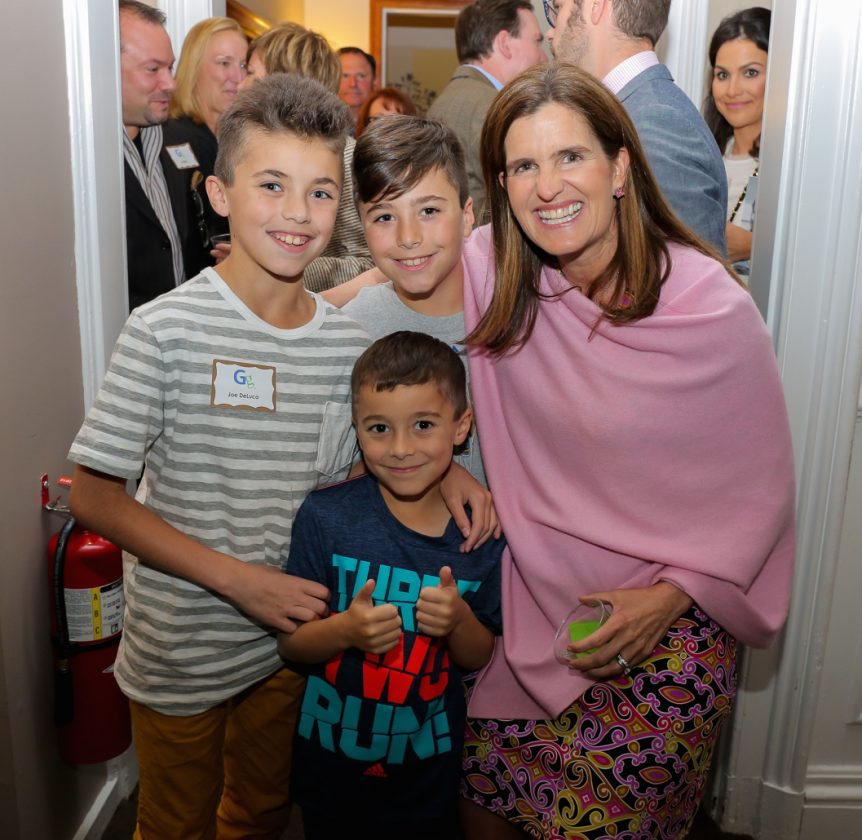By Erica Chayes Wida
Good Grief, a free support center that works to heal people who have lost an immediate family member, is no regular organization. It throws traditional views of group grieving — a circle of people unloading their sadness — out the window and welcomes kids to erupt, literally.
Good Grief’s facility on Mapleton Road in Plainsboro has a padded volcano room intended to allow participants to express their grief physically; a hospital room to reenact and become comfortable with the experience of the loved one who may have passed or spent a lot of time in a hospital; a music room; an arts and crafts room; and even a theater room.
”What makes it so magical is that people think grief is just emotion, but grief is emotional, intellectual, spiritual and physical,” said Joe Primo, Good Grief CEO, about the facility’s resources. “And that physical part tends to lead to stomach aches or behavioral challenges. We are trying to give them the modality for expression of that grief, and teach there are healthy ways to express to it.”
Mr. Primo was brought on by Good Grief’s founding board in 2007 to design and build new programs. With a master’s in divinity and end of life ethics and counseling from Yale, as well as a background in working in hospice, Mr. Primo had witnessed many young people die, who left behind children with no solid support systems in place for them to grieve and cope.
He saw that Good Grief provided a solution for this — serving 183 communities in a 2,000-square-mile radius between its centers in Morristown and Plainsboro. After all, its motto is: “Grief is good.”
In addition to Mr. Primo and his staff, Good Grief flourishes with the help of more than 175 volunteers who undergo thorough training and continued education in order to directly facilitate grieving groups.
On average, families — including children and/or the widowed partner — stay with the program for three years.
”These are young families trying to wrap their heads around the fact that someone important in their family has died,” Mr. Primo said. “First it’s about grieving, but then it’s about re-imagining, rebuilding and re-establishing one’s self and the family’s life. That’s why the process often takes several years.”
When Good Grief first opened in Morristown in 2004, its main focus was on education and advocacy. By 2007, it offered direct services to families to heal. Programs began to blossom month after month after month and the demand continued to grow. In 2012, the center had many families commuting from the Princeton area, but several stopped coming before the usual three-year mark. Mr. Primo discovered the issue for those families was the travel time, so Good Grief sought a solution by establishing a local center for central New Jersey.
A Princeton-area physician, Dr. Robert Meirowitz — whose wife had died a few years prior from breast cancer, leaving two teenagers behind — met a 9/11 widow who also had two teens. Together they helped make a Princeton area center possible.
At first, Good Grief offered its services out of Trinity Church, but the programs grew too large to be accommodated by the church’s limited space. In 2015, Good Grief opened a center at 5 Mapleton Road, near Princeton University Medical Center of Princeton at Plainsboro.
”It went from being an area and community without support for grief to having a robust and nationally recognized program for children and parents,” Mr. Primo said. “Our goal is to create self-advocacy, identify support networks, healthy coping, and how to articulate feelings. This is all happening through the activities in our centers. Everything is highly interactive.”
Mr. Primo expressed that now is a crucial time for Good Grief’s members, as the holiday season can be a stark reminder of an empty seat at the table, whether it’s been months or years. Children at the center have participated in a craft where they paint a blank porcelain plate to reflect on their favorite or most comforting holiday memories or traditions.
”They often use the plate to set a place at the table,” Mr. Primo said. “Through this activity, we help the kids find an empowering voice and ask themselves during an awkward or uncomfortable moment, or series of moments, what it’s going to feel like. It equips the families and leads to self advocating — even switching up the holiday and creating new rituals.”
One of Good Grief’s most important features is that its services are free for everyone, costing approximately $2,000 per participant. The organization relies most heavily on fundraising and the support of its volunteers and community.
To find out more about Good Grief, go to www.goodgrief.org.

